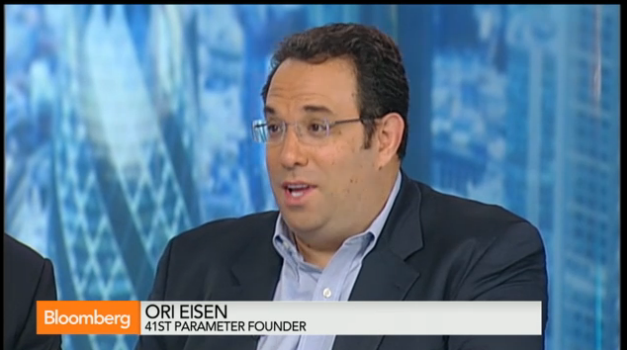All posts by Guest Contributor

Cherian Abraham, our mobile commerce and payments consultant, recently wrote about the future of mobile banking in regards to the Apple Pay news out this week. The below article originally appeared in American Banker and is an edited version of his blog post. Editor's note: A version of this post originally appeared on Drop Labs. Depending on who you ask, the launch of Apple Pay was either exciting or uninspiring. The truth is far more complicated — particularly in terms of how it will impact the dynamics of Apple's relationship with banks. I would venture that most of the financial institutions on stage at the launch of Apple Pay earlier this week have mixed feelings about their partnership. They have had to sacrifice a lot of the room for negotiation that banks have retained with other wallet players such as Google Wallet and Softcard (the company formerly known as Isis). If you are an Apple Pay launch partner, having your credential or token on Apple Pay does not mean that you get to extend that credential into your own mobile banking app or wallet. For example, Bank A, with its credentials stored on Apple Pay, cannot leverage those credentials so that its own mobile banking app can use them to enable direct payments. Banks will have to accept that their credentials will be indefinitely locked to Apple Pay till deletion. No bank wants its brand to be overshadowed by Apple, nor do banks want smartphone users to close their app and open up a different wallet to make a payment. But this was not up for debate with Apple, which wants to tightly control the payment experience. This should be a cause of concern for Apple Pay partner banks, for whom enabling payments outside of Apple Pay in iOS is now off the table. Banks' only hope of having an integrated payment experience is to focus on Android, which supports host card emulation technology. HCE uses software to emulate a contactless smart card and communicate with near-field communication readers. I would expect a lot of banks to revisit Android and HCE in upcoming months. That goes double for the institutions that were not chosen to partner with Apple, along with retailers who have not rejected contactless payments as a modality in stores. Given that Apple will reportedly collect fees from its partner banks when customers execute transactions on the mobile wallet, all banks should be thinking about ways that they can make their presence on other Apple offerings more lucrative. If I were them, I would begin segmenting customers who hold one of iTunes' 500 million active accounts to see which ones are affluent spenders and which cards have higher interest rates, then implement targeted customer incentive strategies to move Apple users to higher-rate cards. I would use the same tactic to convince customers to replace debit cards on file with iTunes with credit cards. But the big takeaway is that from here on out, banks can only gain incremental value from iOS. If they want to create a unified payment system that customers can use as part of their existing banking relationships, they'll have to focus on Android. Should that happen, I doubt that Apple could prevent such moves from diluting its merchant value proposition. But such moves on the part of issuers are hardly long-term strategies to incentivize frequent usage, merchant participation and overall customer value. Learn more about how Experian can help you with your mobile banking needs please visit: http://ex.pn/1t3zCSJ?INTCMP=DA_Blog_Post091214

Data quality continues to be a challenge for many organizations as they look to improve efficiency and customer interaction.

By: Maria Moynihan At a time when people are accessing information when, where and how they want to, why aren’t voter rolls more up to date? Too often, voter lists aren’t scrubbed for use in mailing, and information included is inaccurate at the time of outreach. Though addresses and other contact information becomes outdated, new address identification and verification has not typically been a resource focus. Costs associated with mandated election-related communications between government and citizens can add up, especially if messages never get to their intended recipients and, in turn, Registrar Offices never get a response. To date, the most common pitfalls with poorly maintained lists have been: Deceased records — where contact information for deceased voters has not been removed or flagged for mailing Email and address errors — where those who have moved or recently changed information failed to update their records, or where errors in the information on file make it unlikely for the United States Postal Service® to reach individuals effectively Duplicate records — where repeat records exist due to update errors or lack of information standardization With resources being tighter than ever, Registrar Offices now are placing emphasis on mailing accuracy and reach. Through third-party-verified data and advanced approaches to managing contact information, Registrar Offices can benefit from truly connecting with their citizens while saving on communication outreach efforts. Experian Public Sector recently helped the Orange County Registrar of Voters increase the quality of its voter registration process. Click here to view the write-up, or stay tuned as I share more on progress being made in this area across states.

One of the challenges that we hear from many of our clients is managing multiple collection agencies in order to recover bad debts. Collection managers who use multiple collection agencies recognize the potential upside to utilizing multiple agencies. Assigning allocate accounts to different agencies based on geography, type of account, status of account (such as a skip), first, second or third placement, and other factors may lead to greater recoveries than just using a single agency. Also, collection managers recognize the advantage of pitting agencies against each other in a positive manner to achieve significantly better results. However this can present a challenge in that the more agencies collection managers use, the greater the risk of losing operational control. Here are some questions to ask before engaging in a multiple collection agency strategy: Do you know which agency has which accounts? Were some accounts accidently assigned to more than one agency? Is it easy to locate an account with an agency if it needs to be withdrawn from it? Is information flowing from one agency to another if agencies are used for second and third placements? Managing multiple agencies can get complex pretty quickly, but rather than just using one agency to avoid these complexities, there is an alternative to consider: Loss of control can be overcome with effective systems that allocate and manage accounts assigned to multiple agencies. These systems allow for the allocation, recall, activity tracking, performance reporting, and commission calculations or vendor audits. No more spreadsheets or other time consuming, error prone manual processes. Experian can help with its agency allocation and management solutions through Tallyman Agency Allocation. Learn more about our Tallyman Agency Allocation software.

As data breaches continue to attract publicity, consumers are expecting more from impacted organizations.

by John P. Robertson, Senior Business Process Specialist As a Senior Business Process Specialist for the Experian Decision Analytics, John provides guidance to clients in the areas of profitability strategies for risk based pricing and relationship profitability. He assists banks in developing and implementing successful transitions for commercial lending that improve both the financial efficiency of the lending process and the productivity of the lending officers. John has 26 years of experience in the banking industry, with prior background in cash, treasury, and asset /liability management. For quite some time now, the banking industry has experienced a flat funding curve. Very small spreads have existed between the short and long term rates. Slowly, we have begun to see the onset of a normalized curve. At this writing, the five year FHLB Advance rate is about 2.00%. A simplistic view of loan pricing looks something like this: + Interest Income + Non-Interest Income - Cost of Funds - Non-Interest Expense - Risk Expense = Income before Tax The example is pretty simple and straight forward, “back of the napkin” kind of stuff. We back into a spread needed to reach breakeven on a five year fixed rate loan by using the UBPR (Uniform Bank Performance Report) national peer average for Non-Interest Expense of approximately 3.00%. You would need a pre-tax rate requirement of 5.00% before you consider the risk and before you make any money. If you tack on 1.00% for risk and some kind of return expectation, the rate requirement would put you around a 6.00% offering level. From a lender’s perspective, a 6.00% rate on a minimal risk five year fixed rate loan doesn’t exist. They might as well go home. CFO’s have been asking themselves, “What do we do with this excess cash? We get such a paltry spread. How can we put higher yielding loans on our books at today’s competitive rates? We’ve got plenty of capital even with the new regulation requirements so can we repo the securities and use the net spread for our cost of funds?” Leveraging the excess cash and securities in order to meet the pressing rate demands may be a way banks have been funding selective loans at such low rates on highly competitive, quality loan originations of size. But you have to wonder, what about that old adage, “You don’t short fund long term loans.” Won’t you eventually have to deal with compression and “margin squeeze”? Oh and by the way, aren’t you creating a mismatch in the balance sheet which requires explanation. Are they buying a swap to extend the maturity? If so, are they really making their targeted return? If this is what they are doing, why not just accept a lower return but one that is better than the securities? Share your thoughts with me.

While bankcard originations increased 26 percent year over year to $85.3 billion in Q2 2014, delinquencies continued their downward trend, reaching 0.47 percent of balances — an 8 percent decline year over year.

Online crooks are getting more sophisticated by the second. Nowadays, fraudsters have the ability to conduct “clean fraud,” obtaining legitimate identities of users from the black market or data breaches to compromise a victim’s card account. Malware, too, is becoming more sophisticated both in the mobile and non-mobile space. But how can organizations fight such high-level tactics in such a broad, complex space? John Sarreal, Senior Director of Product Management at 41st Parameter, an online fraud prevention player, sat down with PYMNTS after the recent release of the white paper “Surveillance, Staging, and the Fraud Lifecycle” to reveal the inner workings of a cyber criminal’s mind, what should be done before and after data is snatched, and which aspects of account takeover are the most overlooked and dangerous. Interview excerpts Take us through the mind of a cyber-criminal. What are the most sophisticated tactics used today to capture account information from corporate systems? JS: The amount of clean fraud that we see with our customers is unprecedented. By focusing on obtaining legitimate credentials and identities, fraudsters are more easily able to bypass traditional controls. This means that fraud tools need to adapt and gather additional attributes to augment their fraud screening. Although the techniques they’re using now to obtain these credentials are increasingly sophisticated, the MOs are still rooted in basic phishing and social engineering attacks. Fraudsters will use identity information obtained from the black market or data breaches to conduct very convincing phishing attacks to reveal everything that is needed to compromise a victim’s card account. There’s also increasing sophistication in the use of malware to steal sensitive credentials in both the mobile and non-mobile arena. In Android, for example, Google recently passed a vulnerability that allows sophisticated malware to impersonate digital certificate signing authorities. This vulnerability allowed the malware to install itself on a mobile device without any user notification or intervention – obviously, a very dangerous attack. Link to the podcast and transcript here.
By: Mike Horrocks As summer comes to end, so does the summer reading list but if you are still trying to get one in, I just finished reading “Isaac's Storm: A Man, a Time, and the Deadliest Hurricane in History”, which is about Isaac Cline the resident meteorologist for U.S. Weather Bureau and the 1900 Hurricane that devastated Galveston, Texas. It is a great read, using actual telegraphs, letters, and reports to show the flaws of an outdated system and how not looking to new sources of information and not seeing the values of nontraditional views, etc., lead to unfathomable destruction for the people of Galveston. As I read the book, I was challenged to think of what is right in front of me that I am not seeing for what it is, just like Mr. Cline ignored reports that would have clearly saved lives and helped predict the storm. So, how can this historical storm teach us a thing or two in the financial industry? Clearly one of the most rapidly changing aspects in banking today is the mobile channel. Many institutions have already adjusted to using it as a service channel, with remote deposit capture, balance, inquiry etc., but what are they doing to take it to the next step? On August 7, 2014, Experian is hosting a webinar by American Banker titled, “What is next for mobile banking?” The webinar will have a powerful panel with thought leaders such as Dominic Venturo, the Chief Innovation Officer at U.S. Bank, Gordon Baird, the Chief Executive Officer at Independence Bancshares, and Cherian Abraham, Senior Business Consultant with Experian’s Global Consulting Practice. If you are already using mobile or maybe trying to look at what you could change, this is a great session to attend. Over the next couple of weeks, we are going to go into some of the key topics from this webinar and explore them some more. Hope to see you at this American Banker webinar.

By: Teri Tassara “Do more with less” is a pervasive and familiar mantra nowadays as lenders seek to make smarter and more precise lending decisions while expertly balancing growth objectives and tightened budgets. And lest we forget, banks must also consider the latest regulations and increased regulatory scrutiny from the industry’s governing bodies - such as OCC and CFPB. Nowadays, with the extensive application of predictive analytics in everyday lending practices, it makes sense to look to analytics to fine tune decision-making and achieve a greater return on investment in three common growth objectives for bankcard acquisitions: Profitable growth - How do I find the most profitable acquisition targets? How do I know the borrowing characteristic of each consumer? Are they high spend or high income? Do they carry a balance but always make timely payments? Universe expansion - How many more consumers are there that meet my lending criteria? How can I effectively reach them? Customer experience - How do I offer the right product to the right customer? How do I communicate to my customers that I understand their lending needs? To that end, growth objectives vary by lender; as such, so should their bankcard acquisitions analytical toolkit. The analytical toolkit arsenal should enable lenders to develop refined bankcard campaign strategies based on their specific objectives. Look for upcoming posts on the essential components of the bankcard acquisitions analytical toolkit.

According to the latest Experian-Oliver Wyman Market Intelligence Report, home equity line of credit (HELOC) originations warmed up significantly heading into summer.

By: Mike Horrocks The Wall Street Journal just recently posted an article that mentioned the cost of the financial regulations for some of the largest banks. Within the article it is staggering to see the cost of the financial crisis and also to see how so much of this could have been minimized by sound banking practices, adoption to technology, etc. As a former commercial banker and as I talk with associates in the banking industry, I know that there are more causes to point at for the crisis then there are fingers…but that is not the purpose of my blog today. My point is the same thing I ask my teenage boys when they get in trouble, “Now, what are you going to do to fix it?” Here are a couple of ideas that I want to share with the banking industry. Each bank and market you are going after is a bit unique; however think about these this week and what you could do. It is about the customer – the channel is just how you touch that customer. Every day you hear the branch office is dead and that mobile is the next wave. And yes, if I was a betting man, I would clearly say mobile is the way to go. But if you don’t do it right, you will drive customers away just as fast (check out the stats from a Google mobile banking study). At the end of the day, make sure you are where your customers want to be (and yes for some that could even be a branch). Trust is king. The Beatles may have said that “All You Need Is Love”, but in banking it is all about trust. Will my transaction go thru? Will my account be safe? Will I be able to do all that I need to do on this mobile phone and still be safe since it also has Angry Birds on it? If your customer cannot trust you to do what they feel are simple things, then they will walk. You have to protect your customers, as they try to do business with you and others. Regulations are here to stay. It pains me to say it, but this is going to be a truth for a long while. Banks need to make sure they check the box, stay safe, and then get on to doing what they do best – identify and manage risk. No bank will win the war for shareholder attention because they internally can answer the regulators better than the competition. When you are dealing with complicated issues like CCAR, Basel II or III, or any other item, working with professionals can help you stay on track. This last point represents a huge challenge for banks as the number of regulations imposed on financial institutions has grown significantly over the past five years. On top that the level of complexity behind each regulation is high, requiring in-depth knowledge to implement and comply. Lenders have to understand all the complexity of these regulations so they can find the balance to meet compliance obligations. At the same time they need to identify profitable business opportunities. Make sure to read our Comply whitepaper to gain more insight on regulations affecting financial institutions and how you can prepare your business. A little brainstorming and a single action toward each of these in the next 90 days will make a difference. So now, what are you going to do to fix it?

Experian’s fraud prevention and identity management business helps clients combat the global fraud epidemic costing businesses hundreds of billions of dollars every year. Ori Eisen, founder of the 41st Parameter, a part of Experian, and Frank Abagnale Jr. talk to Bloomberg TV about the major new fraud threats emerging and how Experian can help protect organisations and their customers from becoming victims. Account takeover is a mainstream fraud issue as virtually any web site leveraging username and password authentication can be affected. As we wrote about earlier, another cybersecurity concern served as a reminder that managing fraud and protecting customer identities is becoming more complex as we are fighting creative and motivated people - not predictable systems. Watch the interview here: Learn more about Experian fraud intelligence products and services from 41st Parameter.

A recent survey reveals that 30 percent of travelers have experienced identity theft while traveling or know someone who has.

Your password is weak, whether you use 40 random characters or your dog’s name. With so many large data breaches leading to hundreds of millions of compromised credentials and payment cards in the past two years, it's no surprise that e-commerce account takeover attempts have grown dramatically in recent months – to a degree we have never seen before. Previously, account takeover was primarily a banking issue, not something merchants had to deal with. Account takeover fraud is an alarming trend that spans global airline loyalty programs, e-commerce transactions, social networking logins and virtually any web site leveraging username and password authentication. News of the latest cybersecurity concern should serve as yet another reminder that we live in a heightened state of risk where establishing online trust based solely on username and password or identity data is not sufficient. There are a number of factors that are contributing to the evolving fraud landscape namely that the Internet was not designed for security. This places pressure on organizations to continually adopt new approaches to managing fraud like this growing account takeover threat. In this case, multiple layered controls including device intelligence are essential. As merchants extend more services online and allow customers to store payment information or get more convenient checkout via logged in vs. guest access, we'll continue to see fraud migrating deeper into the e-commerce ecosystem. The account takeover problem will continue as consumers share usernames and passwords across dozens of online profiles and e-commerce logins, opening the door for attackers to access multiple accounts through a single compromised credential. Most of the account portals used by e-commerce merchants and loyalty programs were not built with the same level of security that their online transaction and fraud management systems have in place. So it's a bit of a new risk, but fraudsters are aggressively exploiting the security gaps around things like simple username/password authentication. What can consumers and organizations do to protect themselves? Our recommendation for consumers is that they have unique username and password combinations for every online profile. This protects against attackers compromising one site and leveraging the same credentials to access all of the victim's accounts and online profiles across the web. For businesses, we recommend implementing technology solutions that increase visibility to and recognition of devices for every online interaction so the organization can differentiate attackers from legitimate consumers. Some businesses believe that their products, services and loyalty offerings do not require the same level of protection as online bank accounts, so they leave them exposed to cyber criminals via simple authentication controls. As we’ve seen fraudsters will migrate to the path of least resistance and exploit the fact that most consumers re-use credentials out of convenience. In the digital age where consumers are increasingly represented by their devices the ability to know when there are authentication discrepancies between the data presented by the user and the device presenting those credentials is absolutely important to effectively controlling the threat. The authentication process will shift from a single view to a layered, risk-based authentication approach that will include comprehensive and real-time updates of consumer information. Conversations around the fact that the password is dead or dying have been circulating in the industry recently. What we don’t want is consumers getting tired of constantly changing passwords and giving up trying to protect themselves online. That is the worst case scenario that is becoming more of a reality as the days pass. Educated and aware consumers are still the best way to identify fraudulent attacks, and to keep identity data safe from hackers and devices free of malware. Increased adoption of biometrics, device intelligence and the sharing of authenticated and credentialed identities across industries will become commonplace to help combat account takeovers as they increase. Until then we need to find a password replacement. Learn more about 41st Parameter: https://www.experian.com/decision-analytics/41st-parameter.html?INTCMP=DA_Blog_Post072414 Related: The World Cup of Fraud